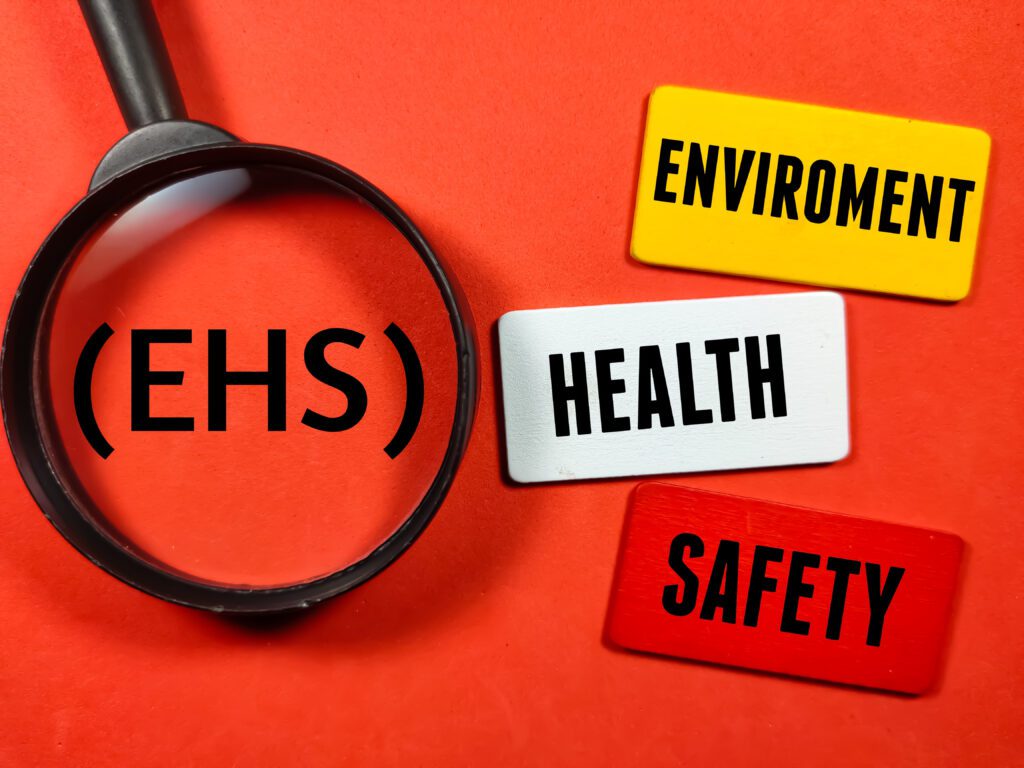In your business, profitability may seem like the most important thing. And while this is crucial to running a successful business, if you aren’t taking steps to protect your workers’ health and safety and limit your negative impacts on the environment, all of your hard work won’t be as beneficial as you might have hoped.
Without a strong environmental, health, and safety (EHS) program, your entire business could be at risk, undermined by safety violations, worker health issues, or environmental compliance costs.
So, what is EHS? And how can you develop a strong EHS program that can lead your business into a sustainable future?
What is EHS?
EHS stands for Environmental, Health, and Safety, each letter corresponding to a key aspect of your business practices.
Environmental
The environmental aspect of your EHS program is concerned with the impacts your business operations have on the environment. It is important to know how your business operations affect the surrounding air, water, or land, and how environmental regulatory requirements may be applicable to your operations.
For instance, petroleum material storage and certain chemical storage can trigger a requirement for a Spill Prevention, Control, and Countermeasure (SPCC) plan and annual Tier II Reporting. Any stormwater discharge onsite may trigger the requirement for a stormwater permit and an associated Stormwater Pollution Prevention Plan (SWPPP). Any waste created by your operation may trigger waste management requirements, recordkeeping, and reporting. Businesses using materials with hazardous substances in sufficient quantities may be subject to Toxic Release Inventory (TRI) reporting.
Your EHS team must be aware of any and all unique environmental compliance regulations and requirements for your business and facility, know how to meet those requirements, and implement strategies to keep compliance on track.
Health & Safety
Health means protecting your employees or workers from illness (i.e., illness resulting from exposure to chemicals or hazardous conditions) and safety means protecting workers from on-the-job injuries. Having a strong formal EHS program in place will help prevent health and safety risks.
In addition, the Occupational Safety and Health Administration (OSHA) has regulatory requirements regarding conditions, training, programs, and reporting that must be in place to protect workers.
A good, formal EHS program is dedicated to continual improvement, employee engagement, and continual training and awareness. To accomplish this, the company must stay up to date on safety regulations and ensure that measures are put into place to prevent injuries. Not only will this protect your company monetarily, but it will also protect your company’s reputation.
Why is EHS Important?
EHS is important because it protects the environment and employees. While this is of course important in and of itself, good EHS practices are also vital to the efficiency of your business.
Reducing risk for people and the environment will improve your operations, protect your company’s reputation, and reduce your risk of violations, fines, and penalties.
For example, let’s say you have a worker who was injured on the job due to an unsafe condition. Not only do you have a valued employee who is now injured, you also have to pause operations to correct violations, spend time investigating the incident, and potentially pay expensive fines and bills associated with the injury. The OSHA website has a calculator that help you further understand the costs associated with various injuries.
EHS is also crucial to the culture of your company. Employees and workers want to feel like they are cared for on the job, and having employees who trust they are working in a safe environment will enable them to work more effectively.
The Importance of Strong EHS Management
While keeping EHS risks at bay may seem like a basic part of running a healthy business, EHS management can actually be rather complicated. OSHA regulations about the health and safety of employees change. New environmental regulations are continually introduced by various government jurisdictions. The lists of hazardous chemicals you need workplace protections against is expanding.
A strong EHS management team will keep these changing requirements organized and implement the proper programs to prevent environmental harm and prioritize worker health and safety.
Your EHS program will include a variety of activities such as performing safety analyses, implementing safety controls, documenting safety issues and events, working with industrial hygienists, collecting and analyzing EHS data, training workers in EHS programs, and ensuring compliance with various environmental regulations.
It’s important to have the right team in place to handle all of these duties. Because of the large umbrella under which EHS activities can fall, you may have different specialists in charge of different areas.
Using the Right EHS Software
EHS software is another crucial part of an effective EHS program, especially as the digital transformation process reaches EHS programs across a variety of companies. The right software solutions can gather, store, and analyze data related to your EHS practices, enabling you to implement proper programs and meet EHS compliance regulations.
Choosing the right EHS software is an important step in building a solid EHS program. There are both custom and off-the-shelf software options you can choose, depending on your company’s needs. You’ll also want to consider both the short-term and long-term costs of the software.
Finding the right software solution can transform the way your EHS program operates, offering creative solutions to a variety of EHS issues.
Get EHS Support
An EHS program can cover a wide range of compliance regulations and requirements, including everything from OSHA regulations to oil storage requirements to pollution reporting.
If you need help finding EHS solutions for your company, contact Tetra Tech’s EHS expert team at [email protected]. We have a variety of EHS professionals on staff who can help you with everything from environmental regulations to EHS software implementation to EHS audits and more.






